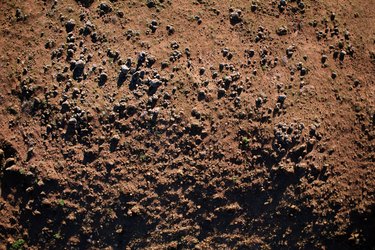
Phosphorous is an important soil nutrient that plays a role in the overall health of lawns, crops, garden vegetables and other plants. Trisodium phosphate, or TSP, is a form of phosphorous that can help protect the health of your plants, although it is not one of the more common forms of phosphorous fertilizer.
Trisodium Phosphate
Video of the Day
Trisodium phosphate forms when phosphoric acids form sodium crystals. This form of phosphate is abundant in the soil around forest fires and areas where plant debris collects. This substance provides a common ingredient in many household cleaners, such as dish detergent. It also serves as a soil cleanser in areas of contamination, making it a useful substance in cleaning up oil spills and other instances of soil contamination. Trisodium phosphate crystals can bind with lead, keeping it from traveling through the soil.
Video of the Day
Seed Treatment
Although trisodium phosphate can help treat the soil, one of the most common agriculture uses for this substance involves using it as a seed treatment. This form of phosphorous acts as a type of inoculant, helping to preserve the seeds and protect new seedlings from funguses and viral pathogens.
Soil Conditions
A soil test can help determine the amount of phosphate in your existing soil. Phosphorous exists in both organic and inorganic forms within the soil. The majority of phosphorus in most soils comes from organic sources, making it a natural substance in gardening and landscaping sites. Excessive plant growth and water runoff can deplete the soil of this nutrient, making it necessary to use phosphate fertilizers, such as those that contain trisodium phosphate.
Deficiencies
A phosphorus deficiency in your soil seldom causes extreme symptoms in plants. This deficiency most commonly results in slow, stunted growth and late maturity. Some plants, especially grassy species, tend to develop reddish leaves when soils develop severe phosphate deficiencies. If a soil test confirms a phosphorus deficiency, using a phosphorus fertilizer can help restore optimal levels of this nutrient.